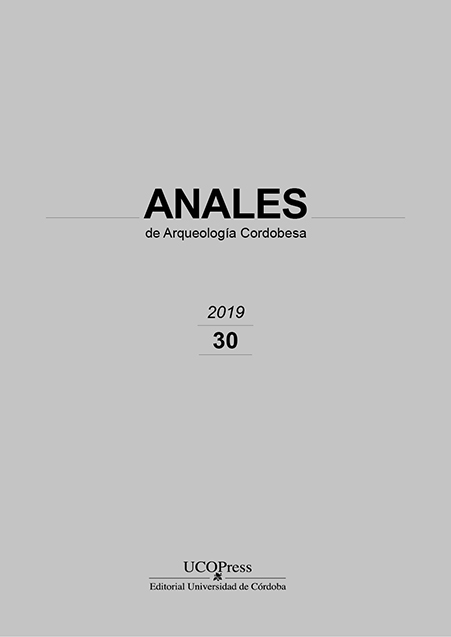The marmor in the fora of the provincia Baetica
DOI:
https://doi.org/10.21071/aac.v30i.12437Keywords:
Marble, forums, Betic Province, architecture, sculpture, epigraphyAbstract
The study of the different marble elements conserved and assigned to the Baetica forums has allowed the hierarchy of the components of the public architectural landscape of their cities. An order that will be determined by the use of the marbles of different origin depending on factors such as the piece that was intended to be made, its location within the forensic scenario, the dignitas of the city, the economic power of its urban elites or the possible connection between that community and the emperor. The arrival to the power of Augusto will suppose a true revolution that will encompass all political, religious, social and cultural aspects; a new era in which the public architecture will be put at the service of the princeps and that in the Betic territory will live a second and last stylistic renewal after the ascension of the Ulpia-Aelia dynasty.Downloads
Download data is not yet available.
Downloads
Published
2019-12-15
How to Cite
MARFIL VÁZQUEZ, F. (2019). The marmor in the fora of the provincia Baetica. Anales De Arquelogía Cordobesa, 30, 133–160. https://doi.org/10.21071/aac.v30i.12437
Issue
Section
Artículos
License
Aquellos autores/as que tengan publicaciones con esta revista, aceptan los términos siguientes:- Los autores/as conservarán sus derechos de autor y garantizarán a la revista el derecho de primera publicación de su obra, el cuál estará simultáneamente sujeto a la Licencia de reconocimiento de Creative Commons que permite a terceros compartir la obra siempre que se indique su autor y su primera publicación esta revista.
- Los autores/as podrán adoptar otros acuerdos de licencia no exclusiva de distribución de la versión de la obra publicada (p. ej.: depositarla en un archivo telemático institucional o publicarla en un volumen monográfico) siempre que se indique la publicación inicial en esta revista.
- Se permite y recomienda a los autores/as difundir su obra a través de Internet (p. ej.: en archivos telemáticos institucionales o en su página web) antes y durante el proceso de envío, lo cual puede producir intercambios interesantes y aumentar las citas de la obra publicada. (Véase El efecto del acceso abierto).


